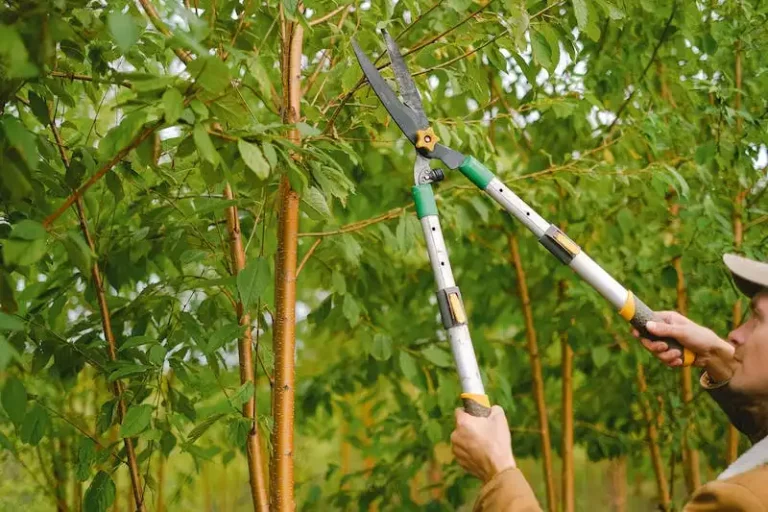The correct strategy against late blight in potatoes involves a combination of preventive measures, timely intervention, and careful cultivation practices. Late blight, caused by the fungus Phytophthora infestans, is a devastating disease that affects potato crops worldwide. It is particularly difficult to control due to its ability to survive in various environmental conditions.
One of the key strategies in managing late blight is the selection of resistant potato varieties. Planting resistant varieties can significantly reduce the risk of infection and help protect your potato plants. Additionally, practicing crop rotation, where potatoes are not grown in the same area for at least two years, can also help prevent the buildup of the late blight pathogen in the soil.
To further protect your potato plants from late blight, it is important to follow proper gardening techniques. This includes ensuring adequate spacing between plants to promote air circulation and reduce moisture buildup, which is favorable for late blight development. Regularly inspect your plants for any signs of infection, such as discolored or rotting leaves. If infected plants are detected, they should be removed from the garden and discarded properly to prevent further spread.
When it comes to controlling late blight, timely intervention is crucial. If late blight is already present in your area, it is recommended to begin preventive sprayings with registered fungicides as soon as the first symptoms are observed. Copper-based products or fungicides containing active ingredients like Ortiva can be effective in protecting potato plants from late blight. Follow the instructions and recommended dosage carefully when applying these products.
In conclusion, managing late blight in potatoes requires a comprehensive strategy that includes preventive measures, vigilant monitoring, and timely intervention. By implementing these strategies, you can minimize the impact of late blight on your potato crop and ensure a successful harvest.
How to prevent potato blight
Late blight in potatoes is a common and destructive disease caused by the fungus Phytophthora infestans. Prevention and management of this disease are essential to protect potato crops and ensure a healthy food supply.
The best strategy to prevent potato blight is to focus on two main aspects – prevention and early treatment. Prevention largely involves taking necessary steps to minimize the risk of the disease, while early treatment involves identifying and treating infected plants as soon as possible.
Here are some key steps you can take to prevent potato blight:
1. Plant resistant varieties: Choose potato varieties that are known to have a high resistance to late blight, such as those with the genetic trait R-gene. This can greatly reduce the risk of the disease.
2. Properly manage the crop: Practice good crop management techniques, such as ensuring proper spacing between potato plants and removing any volunteer potatoes or cull vegetables from your garden. This helps to reduce the chances of the disease spreading.
3. Monitor for early signs: Regularly inspect your potato plants for any signs of late blight, such as dark spots on the leaves or a whitish mold on the undersides of the leaves. Early detection is key to protecting your crop.
4. Practice good sanitation: Remove and destroy any infected plants or plant parts immediately to prevent the disease from spreading. Do not compost diseased material as it can harbor the fungus. Instead, burn or dispose of it in sealed bags.
5. Use organic fungicides: If necessary, use organic fungicides such as copper sulfate or sulfur to control late blight. These can help to reduce the severity of the disease when applied correctly.
6. Practice crop rotation: Avoid planting potatoes in the same location year after year. Instead, rotate your potato crops with unrelated plants, such as legumes or grains. This helps to break the disease cycle and reduce the risk of infection.
By following these preventative measures and implementing early treatment if needed, you can greatly reduce the likelihood of late blight affecting your potato crops. Remember to stay vigilant and stay informed by reading articles and resources on late blight management and prevention.
What is potato late blight?
Potato late blight, caused by the pathogen Phytophthora infestans, is one of the most destructive diseases affecting potato plants. It is a type of fungal infection that primarily affects the foliage and tubers of potato plants.
The late blight pathogen prefers cool and wet conditions, making it most prevalent in regions with high humidity and regular rainfall. The disease can spread rapidly, especially during periods of high moisture and moderate temperatures.
Late blight initially appears as dark, water-soaked lesions on the leaves and stems of infected plants. These lesions can quickly turn brown or black, leading to the death of the affected tissue. The disease can also infect the tubers, causing them to rot and become inedible.
In recent years, late blight has been of particular concern due to the emergence of new strains of the pathogen that are more aggressive and resistant to commonly used fungicides. The most well-known strain is known as US-23 or “Blue 13”.
Due to the importance of potatoes as a food crop, it is crucial to take preventive measures and implement effective treatments to control late blight. Some essential tips for managing late blight include:
- Planting resistant potato varieties, such as Sarpo Mira, Sarpo Axona, or Sarpo Una, which have been bred to be less susceptible to late blight.
- Avoiding planting potatoes near other plants that are susceptible to late blight, such as tomatoes or members of the nightshade family.
- Clearing the garden of any infected plant debris, including foliage and tubers, to eliminate potential sources of infection.
- Promoting good airflow around potato plants by spacing them adequately and removing weeds that can impede air circulation.
- Watering plants at the soil surface rather than overhead, as moisture on the leaves can promote the spread of late blight.
- Applying fungicide treatments, such as those containing active ingredients like metalaxyl, mancozeb, chlorothalonil, or metiram + chlorothalonil.
By following these practices and staying vigilant for signs of late blight, gardeners and potato growers can minimize the risk of infestation and protect their crops. It is also important to stay informed about local late blight reports and recommendations provided by agricultural extension offices or other relevant sources.
If late blight strikes, it is crucial to take immediate action to control its spread. Infected plants should be removed and disposed of properly to prevent further contamination. Regular scouting and monitoring of potato plants can help identify early signs of infection, allowing for timely treatments and protection.
Late blight can be a devastating disease for potato growers, but with the right knowledge and proactive measures, it is possible to minimize its impact and maintain healthy potato crops.
How to recognise potato blight
Potato blight, also known as late blight, is a common and destructive disease that affects potato crops. Recognizing the early signs of blight is crucial for implementing the correct strategy to prevent its spread and minimize damage to the potato plants and tubers.
The first signs of potato blight can be seen in the foliage. Look for dark brown or black lesions on the leaves, especially along the edges. These lesions may have a water-soaked appearance and can quickly spread to cover the entire leaf. The affected leaves will eventually wither and die.
As the disease progresses, it can also affect the stems and stalks of the potato plant. Look for dark brown or black lesions on the stems. These lesions may appear irregular in shape and are often accompanied by a foul odor.
Another characteristic symptom of potato blight is the presence of white or grayish mold on the undersides of the affected leaves. This mold is caused by the pathogen responsible for blight, Phytophthora infestans.
In addition to these visual signs, there are other factors that can help identify potato blight. Blight often occurs in cool and moist conditions, such as during the spring and early summer months. It is also more likely to affect plants that have limited airflow, such as those growing in dense vegetation or heavily irrigated areas.
It’s important to note that the presence of blight on the foliage does not necessarily mean that the tubers have been affected. However, if the leaves and stems of the potato plants are affected, there is a potential risk of blight spreading to the tubers if proper measures are not taken.
To prevent the spread of blight, it is essential to remove and destroy any affected plant material. Make sure to thoroughly clean tools, equipment, and clothing after handling infected plants to avoid spreading the disease to other areas.
Applying preventative treatments, such as copper-based fungicides or organic alternatives like sulfur, can also help protect potato plants from blight. These treatments should be applied before the first signs of blight appear and repeated according to the manufacturer’s instructions.
Additionally, rotating potato crops with other unrelated crops can help break the disease cycle. Plants such as sarpo potatoes have shown resistance to blight and can be a reasonable choice for areas conducive to blight.
By recognizing the early signs of potato blight and implementing the correct preventative measures, it is possible to reduce the impact of the disease and protect potato crops from significant damage.
Best blight resistant potato varieties
If you’re looking to prevent late blight in your potato crop, one of the most effective measures you can take is to choose blight resistant potato varieties. These varieties have been specifically bred to have a high level of resistance to the Phytophthora infestans, the fungus-like organism that causes late blight in potatoes.
One popular blight resistant variety is Sarpo Mira. This variety is known for its strong resistance to late blight and can be a good choice if you live in an area with a high risk of infection. Another blight resistant variety is Lady Balfour, which has been bred to be resistant to both late blight and common scab.
It’s important to note that while these blight resistant varieties offer a higher level of resistance, they are not completely immune to late blight. They can still become infected if the disease pressure is high enough, but they are less likely to be affected compared to other varieties.
When planting blight resistant potato varieties, it’s also important to follow good cultural practices. Make sure to rotate your crops to help prevent the buildup of soil-borne diseases. Avoid planting potatoes in the same area year after year. You can also remove any infected plant material from the field to reduce the chances of the disease spreading.
In addition to planting resistant varieties, you can also use fungicides as a preventive measure. Mancozeb is a commonly used fungicide for late blight. It should be applied according to label instructions and can help protect the potato plants from becoming infected. Other fungicides, such as Signum, can also be effective in preventing late blight.
Remember to always read and follow the instructions on the fungicide labels. You should also be aware of any environmental restrictions or guidelines when using fungicides. Sprinkler irrigation should be avoided after applying fungicides, as this can wash off the protective coating.
By using a combination of resistant potato varieties, good cultural practices, and appropriate fungicides, you can reduce the risk of late blight in your potato crop. This will help to ensure a healthy harvest and prevent losses due to this devastating disease.



